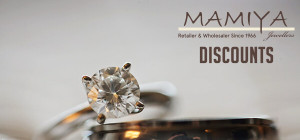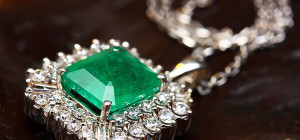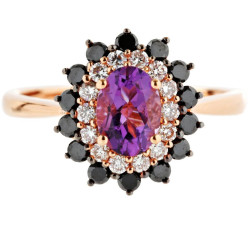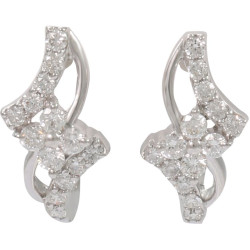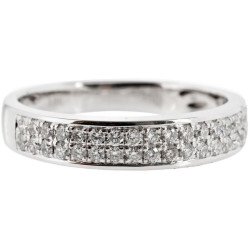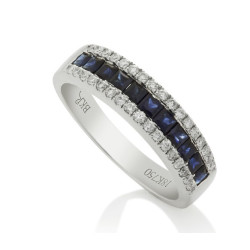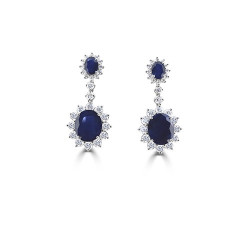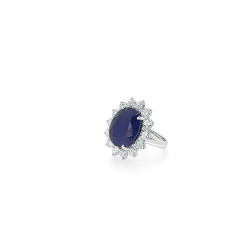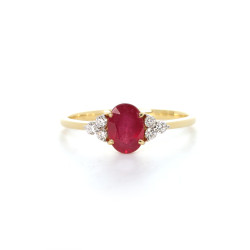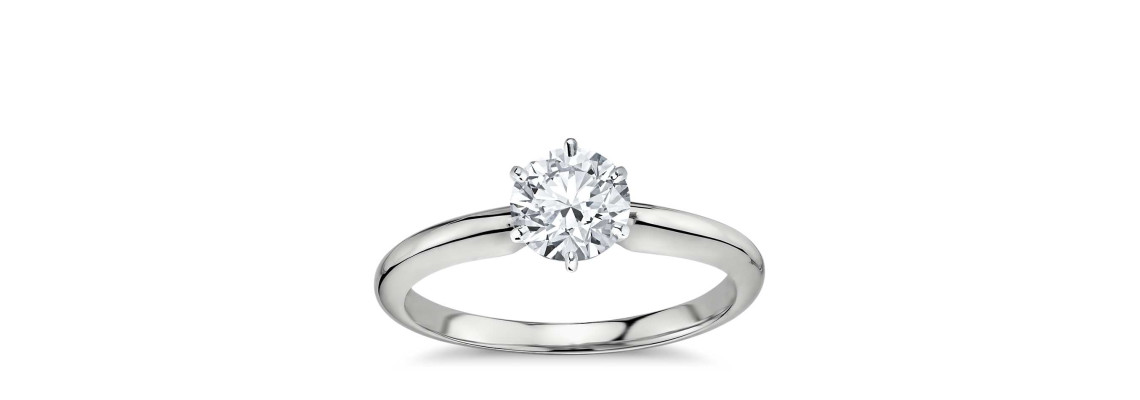
Diamonds are graded into many categories based on various characteristics and hence a usual buyer may get overwhelmed with the influx of information on diamond’s rating, grading, and quality. In order to help first time shopper in making the most informed decision, this step by step guide on finding the right gemstone is given here. Read it carefully.
Have you ever heard of 4C’s of a diamond? If not, then mind that a diamond is graded on the basis of 4C’s – Cut, Carat, Clarity, and Color. On the basis of the importance, these 4C’s are ranked as below:
,- Cut – it’s most important property out of 4C’s
- Color – color of a gem ranks second on this list
- Clarity – it’s the third most important characteristics when it comes to choosing the finest diamond for you
- Carat – it’s the least or last important feature on this list.
Now, read in detail about each of above mentioned features of a diamond’s grading, here.
Cut – as you already know that the diamond’s cut is most important properties amongst 4C’s. It is also hardest property to evaluate. While choosing a well cut diamond is necessary to ensure you pick the right gem that is worth the money, paying a careful attention on certain characteristics is a must to go in the right direction. So, what are these characteristics? These are brilliance, make of a diamond, diamond shape, Girdle proportions and brittleness.
- Brilliance – it is measured by the amount of light that a gem reflects back to the observer. When a diamond is cut, its pavilion facets (top surface of a gem) must act like a mirror. This means that it must reflect all the light entering to the stone back to the spectator. Cut diamonds have higher refractive index and hence, they have unusual brilliance. Though, cut plays a great role here and clearly impacts its brilliance. So, what do you understand by a diamond’s cut? The angle at which a gemstone is cut determines how well it will reflect the light. This will also ensure that how well the gem will sparkle. For gem’s pavilion facets, the ideal cut angle is 41-degrees. Since, in a setting, it is hard to identify any flaws, it is recommended that you should always go for
,
- Make of a Diamond – a gemologist can easily judge the cut by seeing its shape only. However, for a common man it is hard to identify the cut of a gemstone based on its shape. Jewelers and gemologists call it make of a diamond. If you see a diamond with heavy make grade this means that it is not cut well just to retain its weight. Likewise, a gemstone with grade –spready make means that it is cut in a way to weigh more than it actually does. Such diamonds are face-up diamonds that have poor cut grades just to maximize its price. Again, comparing gemstones side by side is the best method to judge which diamond is a well cut stone. Look for the brighter one and be sure that it has excellent cut grades.
,
- Non-Round Diamond Cuts – mind that cut grades are only certified to a round shaped gemstone as due to its symmetrical proportions, it is easy for a cutter to cut its major facets at an ideal cut angle that is 41-degrees. Since, diamonds come in multiple shapes; it is not easy to retain the same cut proportions with other shape of diamonds as brilliant round diamond. This is why; none of the diamond shape has the same brilliance of a round cut gemstone. On order to retain a gem’s shape, cutters have to cut a number of facets just to accommodate its shape. To do this, cutters have to cut these facets at angles that vary from the cut angles that give a diamond greatest brilliance. So, when you shop for gem shape that is different from traditional round diamond shapes, always look for its cut grades in order to get the maximum sparkle from your gem. Indifferent of a gem’s shape (other than the round ones) a Single Cut, European Cut or Old Mine Cut always refers to a diamond that has eight facets up to the table facet and eight facets girdle down. Including the girdle, where upper and lower surfaces meet each other, there are total seventeen facets in gems having above mentioned cut grades. In contrast, a round brilliant cut comes with 7 facets. Mind that the mire the number of facets the greater the gem’s brilliance is. Hence, round brilliant cu diamonds are pricier than any other shape of gemstones. So, you can buy an
,
- Diamond Proportions – a properly proportioned diamond or symmetrical diamond has great brilliance as a cutter can cut its facets at ideal angle or at angles that are closer to the ideal cut angle. A poorly proportioned gem can be disguised in a setting; hence, it is recommended that you should always examine a diamond loose.
,
- Girdle Proportions & Brittleness – if girdle or edges of a diamond are too thin, your gem can break over a period of time. Therefore, you should buy the one that has slightly thicker girdle than a knife-edge level of thinness.
Color – a colorless diamond has greater value! The color grading system that starts from d and ends at Z refers to a diamond’s color status. If your gemstone possesses color grades D, E and F then it will be a colorless gem and hence will be pricey. In contrast, gems with color grades G, H, I, and J are nearly colorless or white gems. K to Z color grades of a gemstone always point towards a tinted, yellow, or yellowish gem that has lower value in the jewelry market. However, as the color grade comes to the extreme end or close to Z, colors become richer and diamonds with such a strong color are called fancy diamonds. Mind that, the value of a fancy colored diamond again starts going up and for buying a yellowish gemstone, you may pay a hefty price.
Clarity – a gem’s clarity is determined on the basis of the size and number of impurities present inside it. Flawless or Internally Flawless are two grades that are given to gemstones that have minimum number of inclusions that are invisible to the necked eye.VVSI1, VVSI2, VSI1, VSI2, SI1, and SI2 are grades given to those diamonds that eye clean, meaning that they don’t have visible inclusions. I1 and I2 grades refer to those diamonds that have eye visible inclusions.
Carat – it’s the easiest characteristic to identify for a common diamond buyer. Clearly, the value o a gem increases with its size. Carat weight determines the value of a gem and hence, smaller diamonds are cheaper than the larger ones. However, you should note that larger diamonds are found rarely in the nature and hence, are in high demand. This is another reason why larger gemstones are pricey.
So, here is an important piece of information for a prospective diamond buyer like you – if you want to get the real value diamond for your money, simply go for gems that have color grades G, H, I, or J. these are near colorless or white diamonds that will look stunning in any settings. Another most important fact to consider here is that, besides above mentioned color grades, your gem should also possess clarity grades within SI1 and SI2. Since, these gems have least or no visible impurities within them, they look lively and bright. And hence, they will look delightful in a jewelry item. So, look for online loose diamond in Dubai as any imperfection in a loose diamond will be hard to disguise. And just enjoy your lovely gem!

